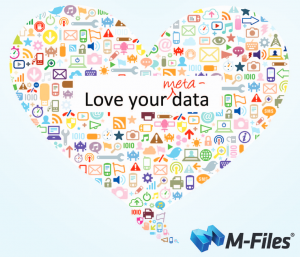Benjamin Wittes in An Approach to Ameliorating Press-IC Tensions Over Classified Information gives a good set of pointers to the recent dispute between the intelligence community and the New York Times:
I’ve been thinking about the exchange over the past couple of weeks—much of which took place on Lawfare—between the New York Times and the intelligence community over the naming of CIA undercover officers in a Times story. (A brief recap in links: here are Bob Litt’s original comments, the 20 former intelligence officers’ letter, Jack’s interview with Dean Baquet, my comments in response, Mark Mazzetti’s comments, and Jack’s comments.)
I want to float an idea for a mechanism that might ameliorate tensions over this sort of issue in the future. It won’t eliminate those tensions, which are inherent in the relationship between a government that has legitimate secrets to keep and a press that rightly wants to report on the activities of government, but it might give the public a lens through which to view individual disputes, and it might create a means through the which the two sides can better and more fully communicate in high-stakes situations.
The basic problem when the press has an undoubtedly newsworthy item that involves legitimately sensitive information is two-fold: the government will tend to err on the side of overstating the sensitivity of the information, because it has to protect against the biggest risk, and the government often cannot disclose to the newspaper the full reasons for its concerns.
…
I can’t say that I care for Wittes’ proposal because it begins with the assumption that a democratically elected government can have “legitimate secrets.” Once that point is conceded, the only argument is about the degree of ignorance of the electorate. That the electorate will never know, hopefully in eyes of some, the truth about government activities is taken as a given.
For example, did you know that the United States government supported the Pol Pot regime in Cambodia? A regime that reduced the population of Cambodia by 25%, deaths coming from executions, forced labor, starvation, etc.
Question for readers who vote in the United States:
Would United States support for a genocidal regime affect your vote in an election?
Assuming that one candidate promised continued support for such a regime and their opponent promised to discontinue support.
That seems pretty obvious, but that is exactly the sort of secrets that the government keeps from the voters.
How do I know the United States government supported Pol Pot? Good question! Sources? Would you believe diplomatic cables from the relevant time period? Recently published by Wikileaks?
The Pol Pot dilemma by Charles Parkinson, Alice Cuddy and Daniel Pye, reads in part:
A trove of more than 500,000 US diplomatic cables from 1978 released by WikiLeaks on Wednesday includes hundreds that paint a vivid picture of a US administration torn between revulsion at the brutality of Pol Pot’s government and fear of Vietnamese influence should it collapse.
“We believe a national Cambodia must exist even though we believe the Pol Pot regime is the world’s worst violator of human rights,” reads a cable sent by the State Department to six US embassies in Asia on October 11, 1978. “We cannot support [the] Pol Pot government, but an independent Kampuchea must exist.”
They are the second batch of cables to be released by the whistle-blowing website from Jimmy Carter’s presidency, which was marked by a vocal emphasis on human rights. That focus shines through in much of the correspondence, even to the point of wishing success on the Khmer Rouge in repelling Vietnamese incursions during the ongoing war between the two countries, in the hope it would, paradoxically, prevent more of the worst excesses of the government in Phnom Penh.
“While the Pol Pot government has few, if any, redeeming features, the cause of human rights is not likely to be served by the continuation of fighting between the Vietnamese and the government,” reads a cable sent by the US Embassy in Thailand to the State Department on October 17. “A negotiated settlement of [Vietnamese-Cambodian] differences might reduce the purges.”
…
Read also: SRV-KHMER CONFLICT PRESENTS BENEFITS AND POTENTIAL PROBLEMS FOR MOSCOW to get a feel for the proxy war status of the conflict between Cambodia and Vietnam during this period.
Although the government keeps a copy of your financial information, social security number, etc., that is your information that it holds in trust. Secrecy of that information should not be in doubt.
However, when we are talking about information that is generated in the course of government relations to other governments or in carrying out government policy, we aren’t talking about information that belongs to individuals. At least in a democracy, we are talking about information that belongs to the general public.
In your next debate about government secrecy, challenge the presumption of a need for government secrecy. History is on your side.

